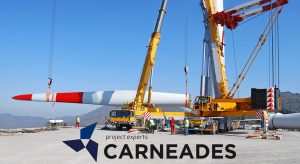Insolvency Risks – a significant, but manageable risk

Developers and operators of wind farms are subject to the risk of losing the WTG supplier or other major contract partners due to either insolvency, an M&A process or shut down of the business activities. Recent examples are the WTG manufacturers, BARD, Adwen and most recently Senvion, but also monopile and tower manufacturer Ambau.
Depending on the status of the project effected by such a risk, it is necessary to evaluate the different options for the way forward in detail, taking the technical, commercial and legal issues into account.
The options for projects in the development phase are
- to change the supplier (or WTG type),
- to realize the project with the problematic partner,
For option (1) it might be necessary to change or re-apply the permit, to alter the expert reports (soil, foundation statics, noise, shadow flicker, birds, bats etc.), to change and renegotiate the BOP design and contracts (for grid connection, access roads, crane pads, foundations etc.) and to renegotiate the turbine supply agreement (TSA) as well as the service and maintenance agreement (SMA). In addition, such a re-planning will normally also require an adaptation of the project budget, as well as the financial model and the financing.
For option (2) it might be the challenge to realize the project in the given time frame and with the budgeted CAPEX and OPEX. Due to the higher risk of working together with a weak partner, the financing banks of project financed wind farms will also have higher requirements on budget control and reporting. As a result, the project management of such a wind farm will be more complex and potentially require increased personnel resources.
For projects in the installation phase, the employer or operator is facing even higher risks, as changing a major contractor might either be impossible, very costly, or can even lead to a stranded investment. If for example major components (i.e. foundations) have already been installed and a different WTG model cannot be used, the effect could be fatal for the project and even existence-threatening for the developer.
However, if the related wind farm might be in the taking-over, or operational phase, the consequences could also be severe, but could be handled by means of a structured process. Also, in such a phase, it is vital to analyze the contractual, technical, financial and legal aspects to find a feasible way forward. Necessary considerations in this respect are for example the investigation of the supply and maintenance agreements (e.g. TSA / SMA), warranty issues, availability guarantees, financial bonds and the technical documentation (as built, O&M, escrow etc.). This could require to re-negotiate the contract for maintenance and repair (with the existing or a new contract partner), or even to establish an own venture to operate the wind farm.
In any case, it will be necessary to perform a deep analysis of the related contracts, the planned and alternative technology, the permit, the time schedule, the business case as well as the planned equity and debt financing – in order to make a decision on the way forward.
CARNEADES has been and is active in several on- and offshore projects and is capable to manage the risk involved in such an insolvency case. In our projects we provide strategy advice, project support, or dedicated project teams to provide solutions on contractual, technical, commercial and legal aspects.
For more information see our experts or the expertise of CARNEADES Legal LLP on insolvency in self-administration.

